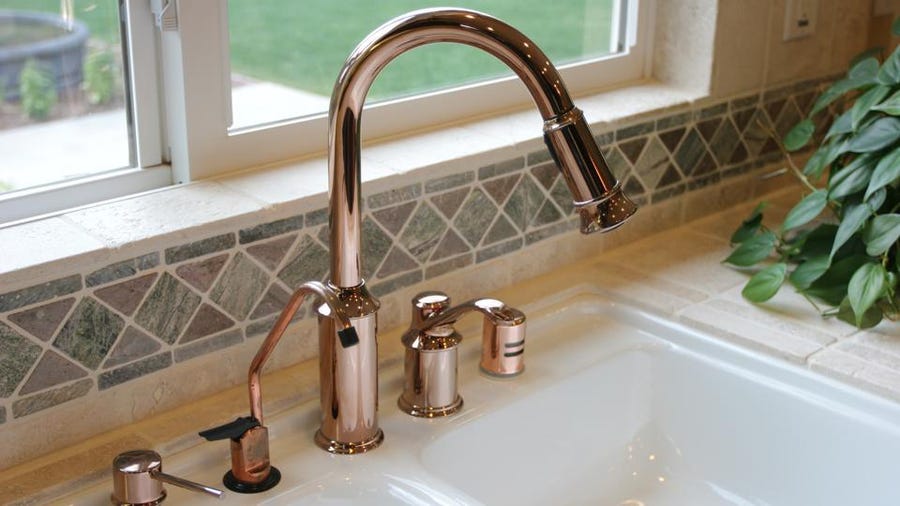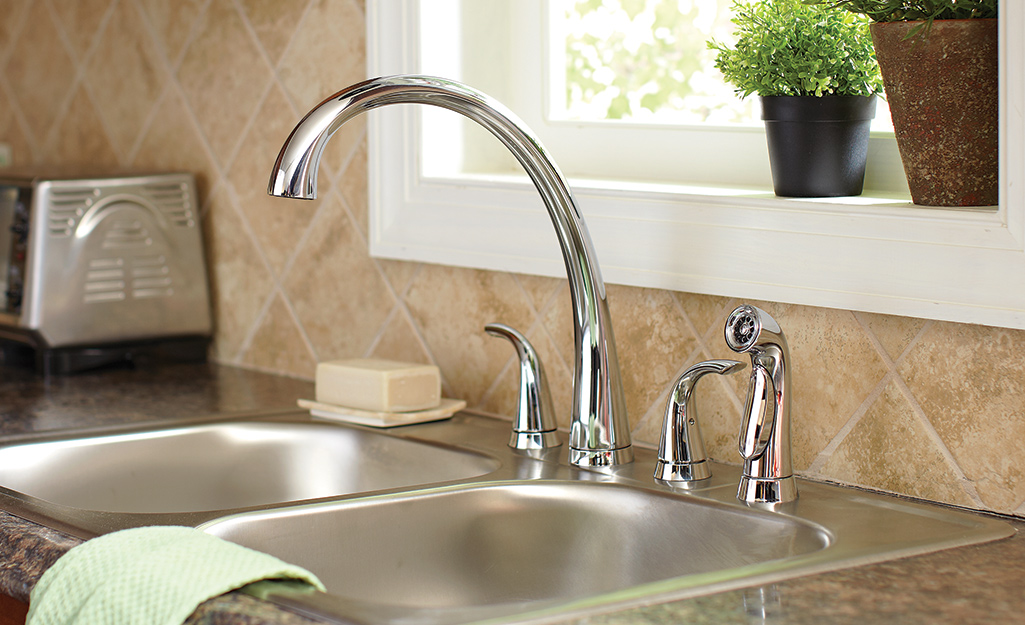Are you looking to upgrade the utility sink in your home? Look no further! This guide will provide you with all the necessary information that you need to know about choosing the right utility sink faucet for your home.
You’ll learn about all the different types of faucets, their features and how to choose wisely so you make an informed choice.
Choosing a utility sink faucet for your home or workplace is an important decision that will affect the convenience and usability of your sink for years to come. The many different types, styles, and features available make it a challenge to find the right one that meets both functional needs and fits in with the décor of your room. This guide will provide you with all the information you need to either make an informed purchase decision or work with a professional plumber to plan and install the perfect utility faucet for your space. We’ll discuss the various types of utility faucets, their features, cost factors, and installation considerations so that you can be confident in getting exactly what you need.

Definition of utility sink faucet
A utility sink faucet is a specialized tap that allows for both washing and routing of water from a sink to a basin or other suitable receptacle. It is often used in places such as the laundry room, mudroom or garage for cleaning tasks and for draining dirty water away from the working area. Typically, these types of faucets are constructed from chrome-plated brass or stainless steel and feature either a wall-mount or top mount design.
Utility sink faucets usually have one handle to control both cold and hot water flow, with an interior mix valve controlling the balance between the two. They typically have connections to attach hoses, while some also include an extension arm with sprayers. Depending on their style and design, they may be fitted with several features such as ports for connecting various hoses. Additionally, they provide flexible plumbing connections to accommodate different wall thicknesses in homes; today’s building codes vary considerably across municipalities requiring that these fixtures meet certain specifications.
Importance of choosing the right utility sink faucet
Having the right utility sink faucet is an important part of creating a functional space in your home. The right faucet needs to feel comfortable, look attractive, and provide the proper level of water pressure for your specific needs. When choosing a new utility sink faucet it is important to consider its features and how they fit with your own lifestyle.
Considering features such as type, quality of material, brand and price point can help you find a model that best suits your needs and budget. With many options available for both utility sink designs as well as materials used to make them it may seem overwhelming; however by following this guide you can ensure you select the perfect one for your home.
Types of Utility Sink Faucets include: Single Hole Faucets, Pull-Down Faucets or Pull-Out Faucets, Handheld Sprayer Faucets & Wall Mounted Faucets. Additionally most offerings also have variations in spout style (for example goose neck or high arc styling).
Quality of materials is also an important factor to consider when selecting a utility sink faucet as it influences durability & longevity of the product over time. These can span from chrome finishes like stainless steel or more utilitarian materials such as brass or plastic depending on how often you plan on using the fixture.
Finally when looking for a quality faucet brand & price point are significant considerations too – manufacturers such as KOHLER or Moen are known for their attention to detail while Delta or Danze provide affordable yet quality alternative solutions based on fit & function requirements desired.
Materials of Utility Sink Faucets

Today, there is an incredible range of materials used to make faucet fixtures. Materials such as chrome, brass, and even durable ceramic and plastic are used to create utility sink faucets. However, the three most popular materials are stainless steel, bronze, and brass.
Stainless Steel: Stainless steel is one of the most popular materials used for utility sink faucets. They offer a modern and sleek look which can easily blend into any kitchen or space with ease. Additionally, due to its high levels of rust-resistance and durability in wet areas it can not only look great but last for a long time.
Bronze: Bronze is an attractive choice for utility sink fixtures due to its deep color and warm tones. Its natural material adds a certain appeal that metal finishes just don’t offer. Additionally bronze can be treated to add more resistance against scratches as well as water spots which makes it easier to clean and maintain thereby improving your overall satisfaction with the fixture over time.
Brass: Brass has a timeless quality that never goes out of style and fits perfectly into a traditional or classic styled space while still adding beauty to modern flair when needed. While brass may require more cleaning than other metals due to its tendency to tarnish easily, its dense composition makes it extremely resistant against wear-and-tear or corrosion thereby increasing its lifespan substantially if cared for properly.
Stainless steel
A stainless steel utility sink faucet is both rugged and attractive, and can provide the perfect solutions for all kinds of home utility needs. This type of faucet is available in a wide variety of sizes and styles, from single handle to double handle versions and with different spout heights. Here are some key points to consider when looking at stainless steel utility sink faucets for your home.
The surface finish on a stainless steel utility sink faucet should be corrosion resistant, as it will be exposed to moisture in the utility area. Look for NSF approved finish that carries a warranty against corrosion or pitting caused by exposure to chlorine or other water treatments. You should also ensure that any connections you purchase are also NSF approved, so you can be sure they will work securely with your existing plumbing fixtures.
If comfort is important to you, look for an ergonomic style design with a higher arc spout so you can fill larger items into the basin without splashing water onto yourself or your countertop. Many models come equipped with quick-release spray heads that make rinsing large items quick and easy. Lastly, many stainless steel utility sink faucets come with optional temperature control levers so you can turn off hot water quickly if needed for safety purposes.
Brass
Brass is a strong and durable material, making brass utility sink faucets an excellent choice for a laundry room. Many models feature a chrome finish to provide a sleek and stylish look to any home.
Brass models also come in various sizes and designs, allowing you to customize the look of your utility sink according to your personal preference. In addition, brass sink faucets are often the most affordable option on the market, making them an attractive economical choice if you’re looking for a way to spruce up your home without breaking the bank.
Copper

Copper finish faucets bring a timeless elegance to the utility sink. With its rustic charm, they will add a touch of luxurious sentiment to every space.
Copper is highly durable, easy to clean, and will not easily corrode. Added benefits include being able to reduce water spotting and resist bacterial growth with its antibacterial properties. In addition, some copper finishes provide bacteriostatic effects that can slow the growth of bacteria on the sink surface for a healthier environment.
Copper is ideal for high-traffic area because it is sturdy enough to withstand constant use. It is also made available in a variety of shapes and sizes that can fit with sinks of all sizes, making it perfect for both commercial or residential use.
Installation of Utility Sink Faucets
Utility sink faucets are an essential component for any utility room or laundry area. These specialized types of faucets provide a unique function that is different from kitchen or bathroom faucets, and their installation requires extra care to ensure a secure and durable structure. In this section of the guide, we will discuss the specific steps for installing utility sink faucets in your home.
When installing a new utility sink, the starting point is to ensure you have all the necessary components for installation. You will need plumber’s tape to seal any potential leaks as well as mounting hardware if your unit doesn’t include it. Adapters and connectors should also be included in your kit. Additionally, if you plan to upgrade the hot/cold water plumbing lines then specialty supply lines specifically designed for utility sinks should be used. It’s important that these items are properly organized before beginning so you don’t run into any complications along the way.
Once everything is ready, begin by turning off both hot and cold-water shutoff valves under the sink before disassembling existing components such as existing water lines if you’re replacing an existing utility sink faucet. After loosening and removing every component thoroughly clean up each surface from old corrosion or sediment in order to clear away obstruction points for new installation process of your chosen model of utility sink faucet. Then Mount the faucet body onto where you plan to install it securely onto the wall surface or working center with nuts and bolts included with supply package. Securely fasten them by tightening nuts using adjustable pliers while avoiding overtightening at all costs which can lead to breaks due to metal deformation. Afterward, use plumbers tape right into edge of base where fixture meets metal around body generally containing both hot & cold water sources, use hammer drill followed by flat & Phillips head screwdriver even gloves could come in handy when necessary.
Professional installation vs. DIY installation
When it comes to installing a utility sink faucet, you can easily choose to DIY or hire a professional. Professionals are best suited for complex jobs, like replacing an existing faucet or connecting the valves to the main house water supply line.
If you choose DIY, it’s important to know exactly what you’re doing, and follow all instructions carefully for safety. To make things easier, we recommend researching installation tutorials or guide videos before beginning any project.
Additionally, if you’re installing a complete utility sink set up from scratch, we recommend hiring a professional because of the complexity of the job.
Tools and equipment needed for installation

Before you install a new utility sink faucet, you will need to make sure that you have the right tools and supplies for the job. You should acquire a good quality adjustable wrench, a handyman’s pliers and a screwdriver that fits the screws on the fixture. You may also need to buy a few additional components for your installation such as an aerator, flow control valve, shutoff valve and supply lines.
Make sure to read through your product manual so that you are aware of all parts involved in the installation process. Additionally, you should also have a bucket on hand in case there is any water leakage during installation or adjustment processes.
Conclusion
Choosing the right utility sink faucet for your home is an important part of making sure that you’re getting the most out of your new utility sink. It’s important to consider all of the factors listed above when selecting a faucet, and make sure it meets all of your needs and desires.
Make sure that you take time to read reviews and ask questions if needed before purchasing so that you can be sure the faucet will meet all of your expectations. With a little research, you’ll be able to find the perfect utility sink faucet for your home.
FAQ’s
How do I know which sink faucet to buy?
When buying a sink faucet, consider the sink’s size and mounting holes, the style and finish of the faucet, the number of handles, and the features you want, such as a sprayer or a soap dispenser.
What type of sink is best for a utility room?
A utility room sink should be durable, easy to clean, and able to handle large and heavy items. Stainless steel or porcelain-enameled cast iron sinks are good options for utility rooms.
How do you match faucet to sink?
To match a faucet to a sink, consider the sink’s mounting holes and the faucet’s configuration. Also, consider the style and finish of the faucet to ensure it complements the sink.
Can you put any faucet on a utility sink?
Not all faucets will fit all utility sinks. It’s important to check the sink’s mounting holes and the faucet’s configuration to ensure they are compatible.
What type of faucet is the best?
The best type of faucet depends on your needs and preferences. Some popular types of faucets include single-handle, double-handle, pull-out, and pull-down faucets.
What is the most popular faucet?
There are many popular faucet brands and styles, but some of the most popular include Delta, Moen, Kohler, and Pfister.
Do faucets fit all sinks?
No, faucets do not fit all sinks. It’s important to check the sink’s mounting holes and the faucet’s configuration to ensure they are compatible.
What is the difference between cheap and expensive faucets?
The main difference between cheap and expensive faucets is the quality of materials and construction. Expensive faucets are typically made with higher-quality materials, such as solid brass, and have better finishes and longer warranties.
What do you match your kitchen faucet to?
When choosing a kitchen faucet, consider the style and finish of your kitchen cabinets and appliances. You may want to match the faucet to the cabinet hardware or the finish of your appliances.
Which is better touch or touchless kitchen faucet?
Both touch and touchless kitchen faucets have their advantages. Touch faucets are more affordable and allow for greater control over water flow, while touchless faucets are more hygienic and convenient for hands-free use. Ultimately, the choice comes down to personal preference.
See Also:

